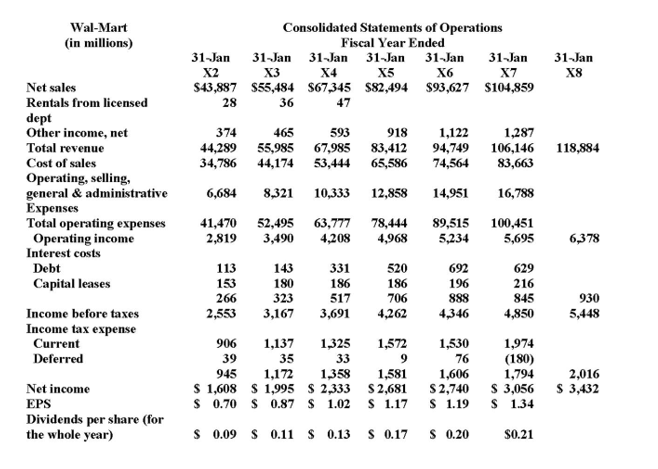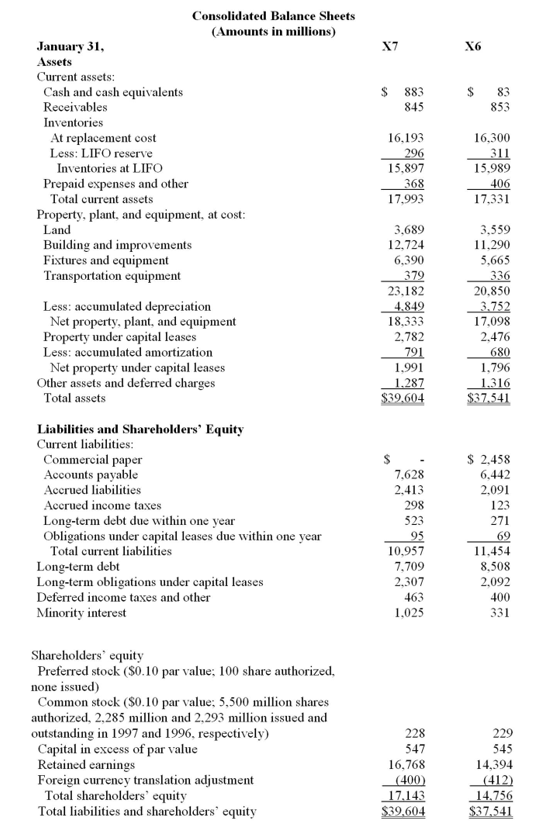Refer to the financial statements for Wal-Mart, below

a. Calculate for X7 the ratios listed below. X6 numbers are provided for comparative purposes.
b. Working capital management is an important consideration for many companies. Which component of Wal-Mart's working capital do you think it spends most time managing? That is, which component is likely to be the most important? Why? What has happened to this component from X6 to X7?
Note: Use ending inventory, ending accounts receivable, and ending accounts payable in the calculation of days' inventory outstanding, days' receivable outstanding, and days' payables outstanding respectively. Use average inventory, average accounts receivable, and average accounts payable in the calculation of inventory turnover, accounts receivable turnover, and payables turnover respectively.
Definitions:
Prescriptive Theories
Prescriptive theories offer specific recommendations or guidelines for actions, aiming to produce desired outcomes based on established principles or empirical findings.
Particular Type
A specific category or class with distinct characteristics that distinguish it from others.
Necessary Conditions
Necessary conditions are requirements or prerequisites that must be met for a certain event to occur or for a certain statement to be true, without which the event or statement cannot materialize.
Leadership Theories
A set of concepts and models that explain how leadership influences the performance and behavior of individuals and groups.
Q9: If a firm capitalizes a lease
Q22: Which of the following controls would be
Q30: Which of the following statements is correct
Q32: During the testing of a year end
Q40: If the software refinement had been capitalized
Q49: What can users can reasonably expect from
Q69: The American Institute of CPAs sets auditing
Q69: Which of the following is the most
Q78: Fraud Risks List potential fraud schemes related
Q80: The auditor would be most likely to